Grandchildren Living in Grandparent-Headed Households, 2019
Family Profile No. 7, 2021
Author: Lisa Carlson
The share of children living in grandparent-headed households has increased since the 1970s, adding to the growing diversity in children’s living arrangements (FP-18-01). Using the American Community Survey, this family profile charts grandchildren residing in grandparent-headed households from the child’s perspective, focusing on both multigenerational grandparent-headed households (parent present) and skipped-generation grandparent-headed households (no parent present). The profile further examines variation in types of grandparent-headed households by minor children’s age, household economic disadvantage, and race/ethnicity. This profile is an update of FP-18-01.
Trend in the Proportion of Children Living in a Grandparent’s Household and Presence of Parent
- The percentage of minor children living in grandparent-headed households has increased since 2009 with nearly 1 in 10 children residing in this family form in 2019 (from 7.2% in 2009 to 8.4% in 2019).
Figure 1. Percentage of Children Living in Grandparent-Headed Households, 2009 and 2019
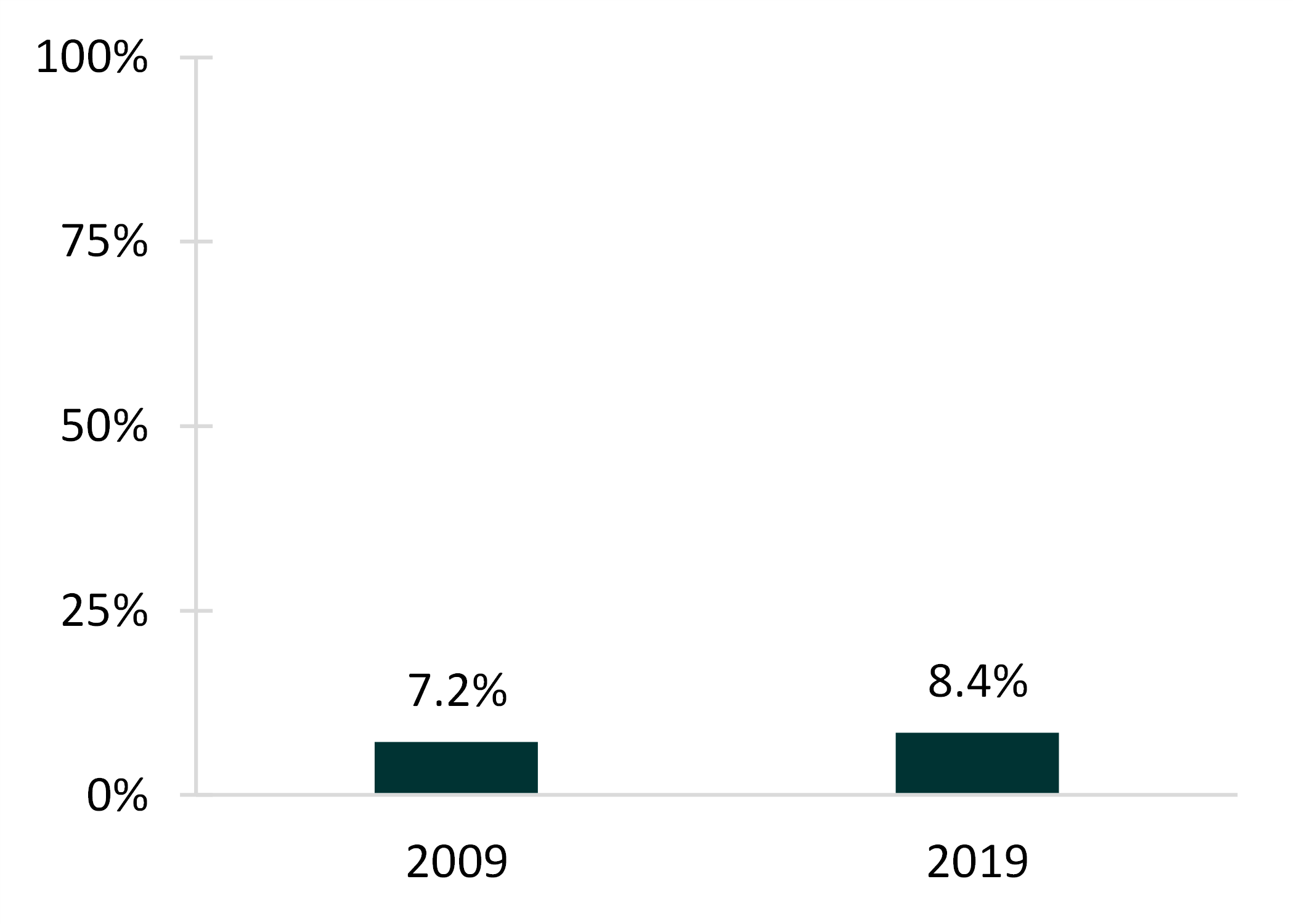
- About three-quarters of minor children who resided in grandparent-headed households lived in multi-generational households (with a parent present), and one-quarter lived in skipped-generation households (without a parent present).
Figure 2. Children Living in Grandparent-Headed Households by Presence of Parent, 2019
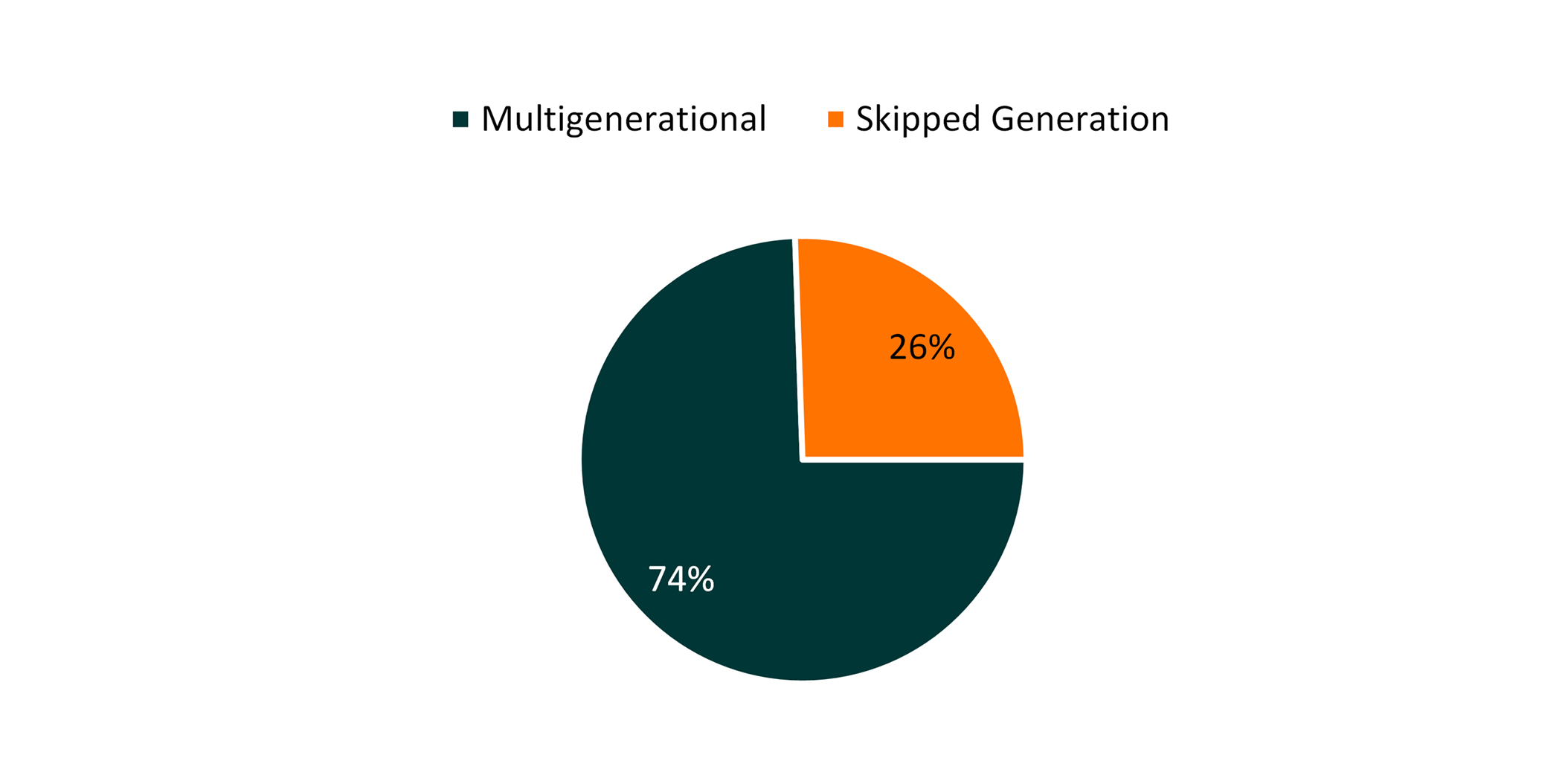
Children Living in a Grandparent’s Household by Presence of Parent and Age of Child
- Regardless of age, the majority of minor children who lived in grandparent-headed households also had a parent present in the household (multigenerational).
- The share of minor children who lived in skipped-generation households increased with children’s age and was highest among those aged 13 to 17.
- The percentage of minor children aged 13 to 17 who lived in skipped-generation households was more than double the share of minor children aged 6 and under (39% compared to 17%).
Figure 3. Children Living in Grandparent-Headed Households by Presence of Parent and Age of Child, 2019
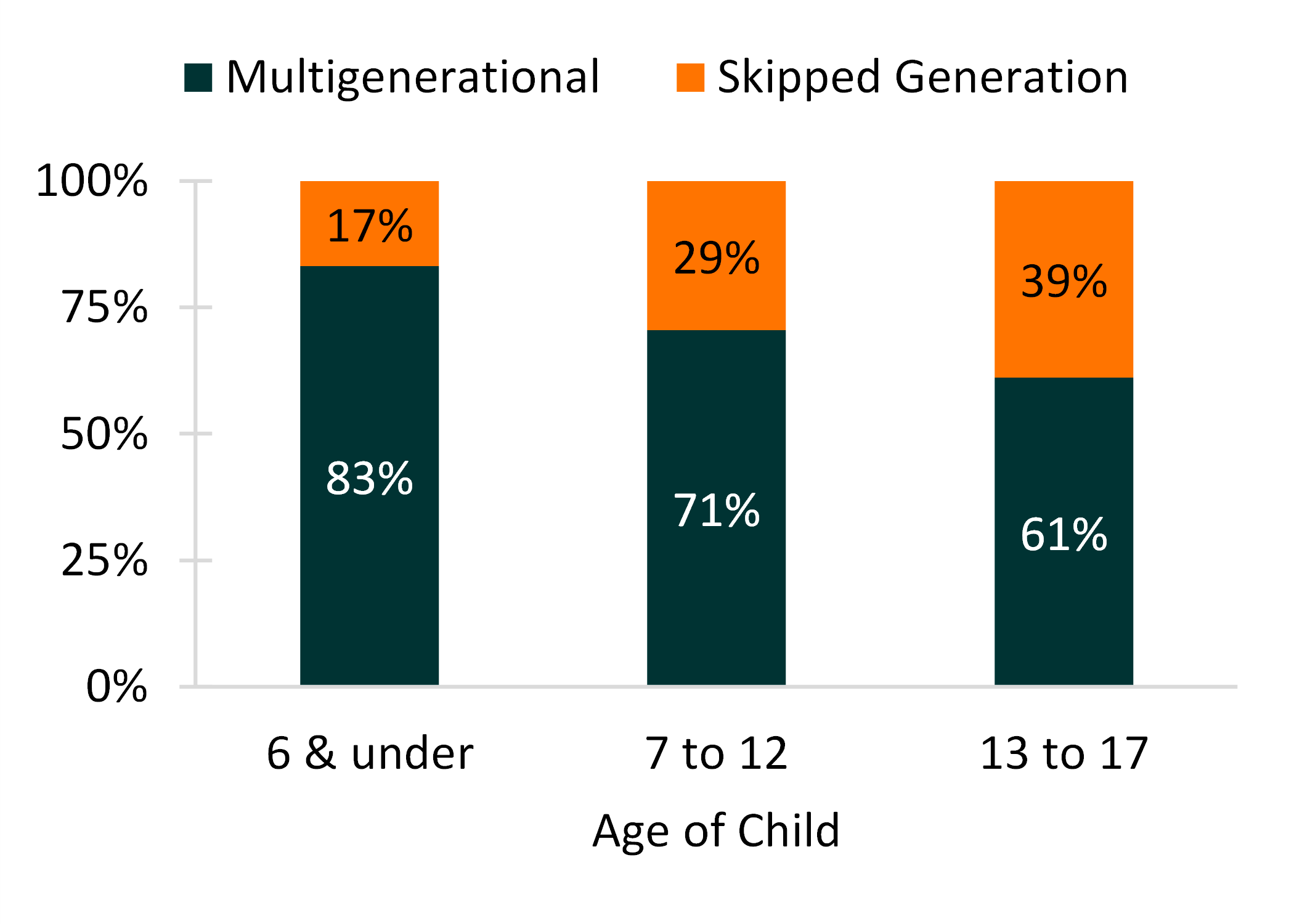
Economic Disadvantage Among Children Living in a Grandparent’s Household by Presence of Parent
- Among all children living in grandparent-headed households, the proportion living in skipped-generation households varied by income level, with higher levels at lower incomes.
- Among children living in grandparent-headed households below the poverty line, about half resided in multigenerational households (55%) and half in skipped-generation households (45%).
Figure 4. Economic Disadvantage Among Children Living in Grandparent-Headed Households by Presence of Parent, 2019
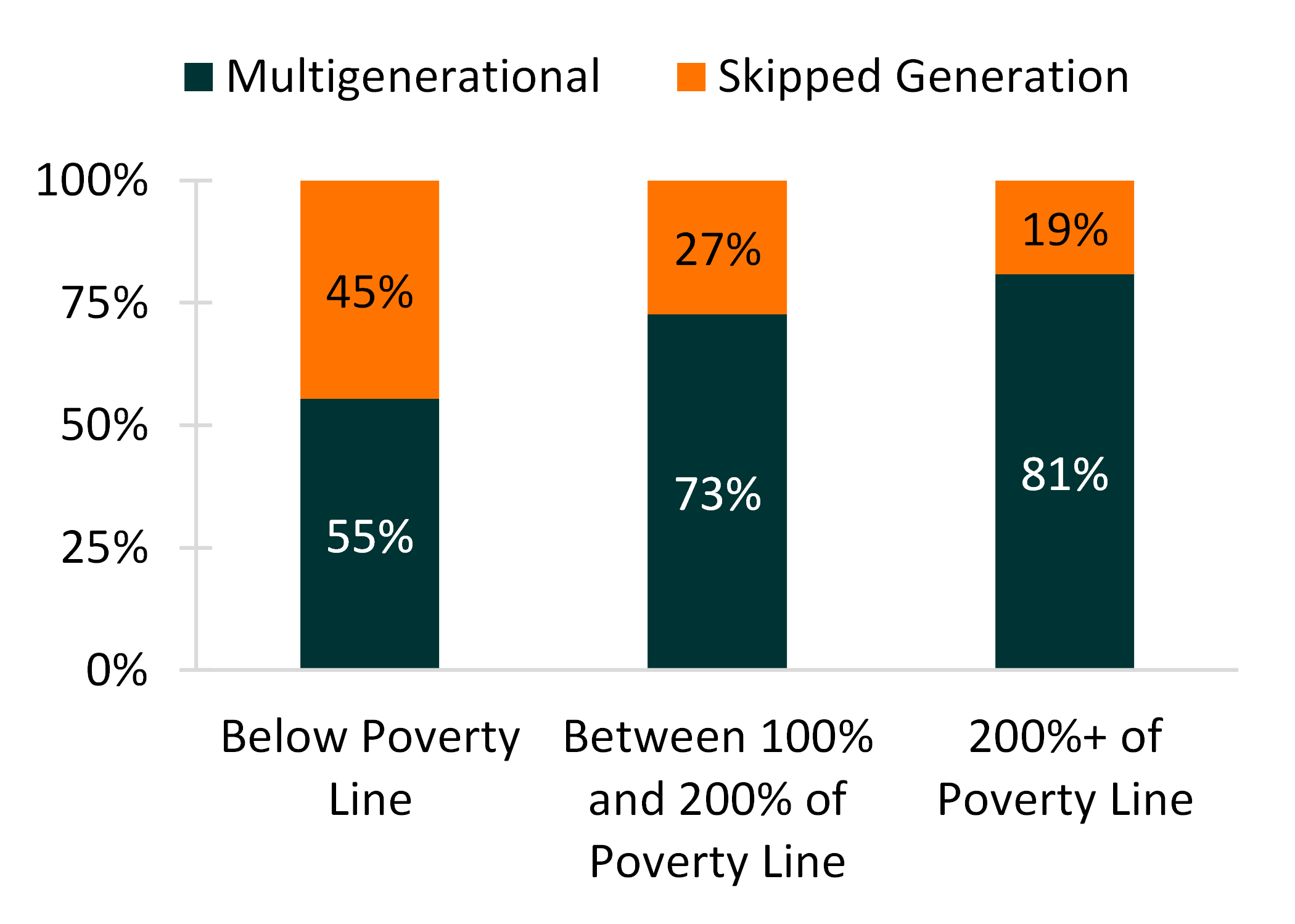
Variation by Race/Ethnicity
- Among minor children residing in grandparent-headed households in 2019, the proportion living in multigenerational households (parent present) was higher than in skipped-generation households across all racial/ethnic groups.
- There was some variation in the proportions of the two types of grandparent-headed households across race/ethnicity.
- The shares living in multigenerational households were larger for Hispanic and Asian children (83% and 87%, respectively) than for children of all other racial/ethnic groups.
- The percentage of children in skipped-generation households was largest among Black children (31%), followed by white children (28%), and children of other racial/ethnic groups (27%).
Figure 5. Children Living in Grandparent-Headed Households by Presence of Parent and Race/Ethnicity of Child, 2019
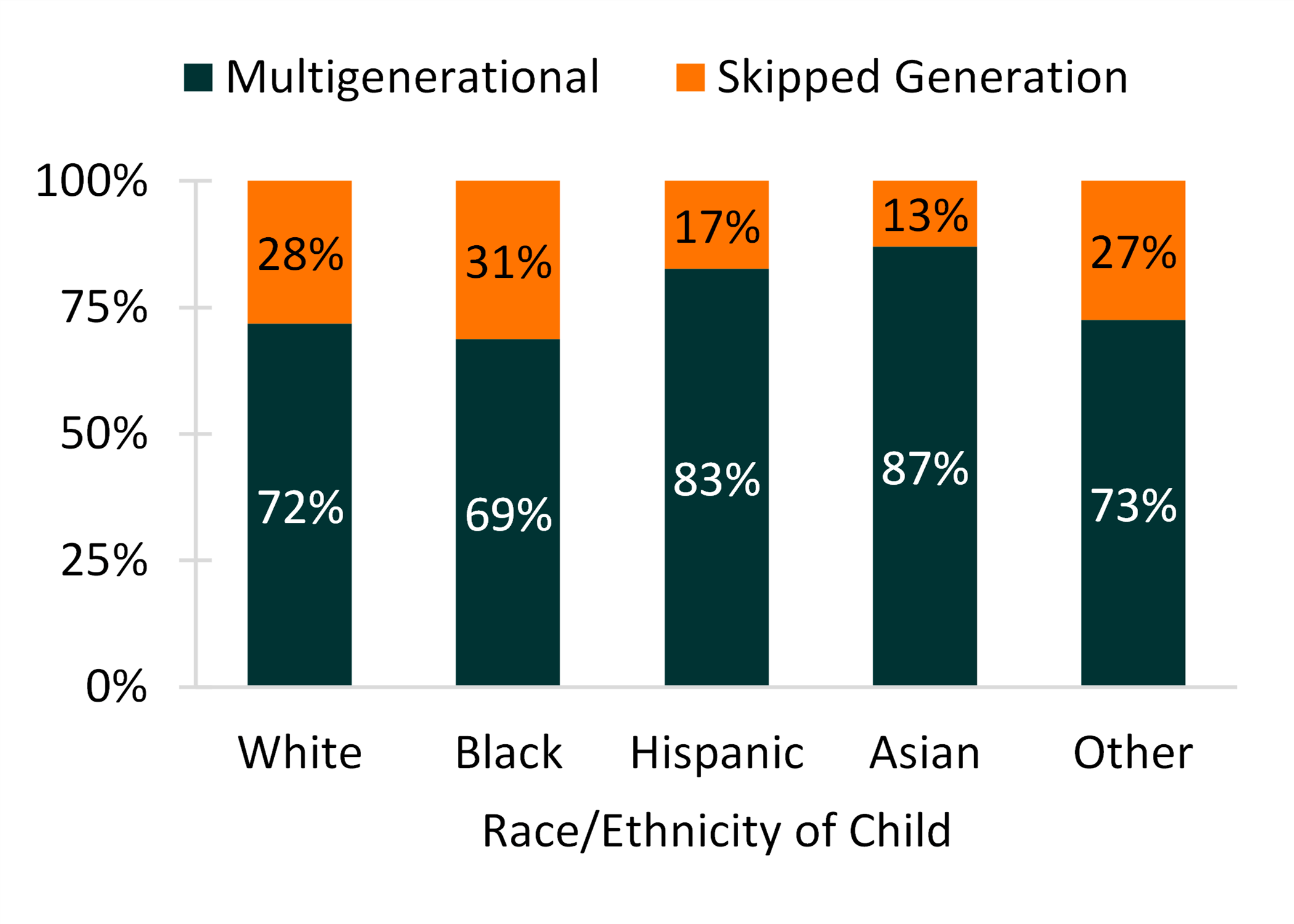
Data Source
- Ruggles, S. Flood, S., Goeken, R. Grover, J., Meyer, E. Pacas, J. & Sobek, M. (2020). IPUMS USA: Version 10.0 [dataset]. Minneapolis, MN: IPUMS.
Reference
- Wu, H. (2019). Grandchildren living in a grandparent-headed household. Family Profiles, FP-18-01. Bowling Green, OH: National Center for Family & Marriage Research. https://doi.org/10.25035/ncfmr/fp-18-01
Suggested Citation
- Carlson, L. (2021). Grandchildren living in grandparent-headed households, 2019. Family Profiles, FP-21-07. Bowling Green, OH: National Center for Family & Marriage Research. https://doi.org/10.25035/ncfmr/fp-21-07


This project is supported with assistance from Bowling Green State University. From 2007 to 2013, support was also provided by the U.S. Department of Health and Human Services, Office of the Assistant Secretary for Planning and Evaluation. The opinions and conclusions expressed herein are solely those of the author(s) and should not be construed as representing the opinions or policy of any agency of the state or federal government.
Updated: 04/06/2021 02:04PM

